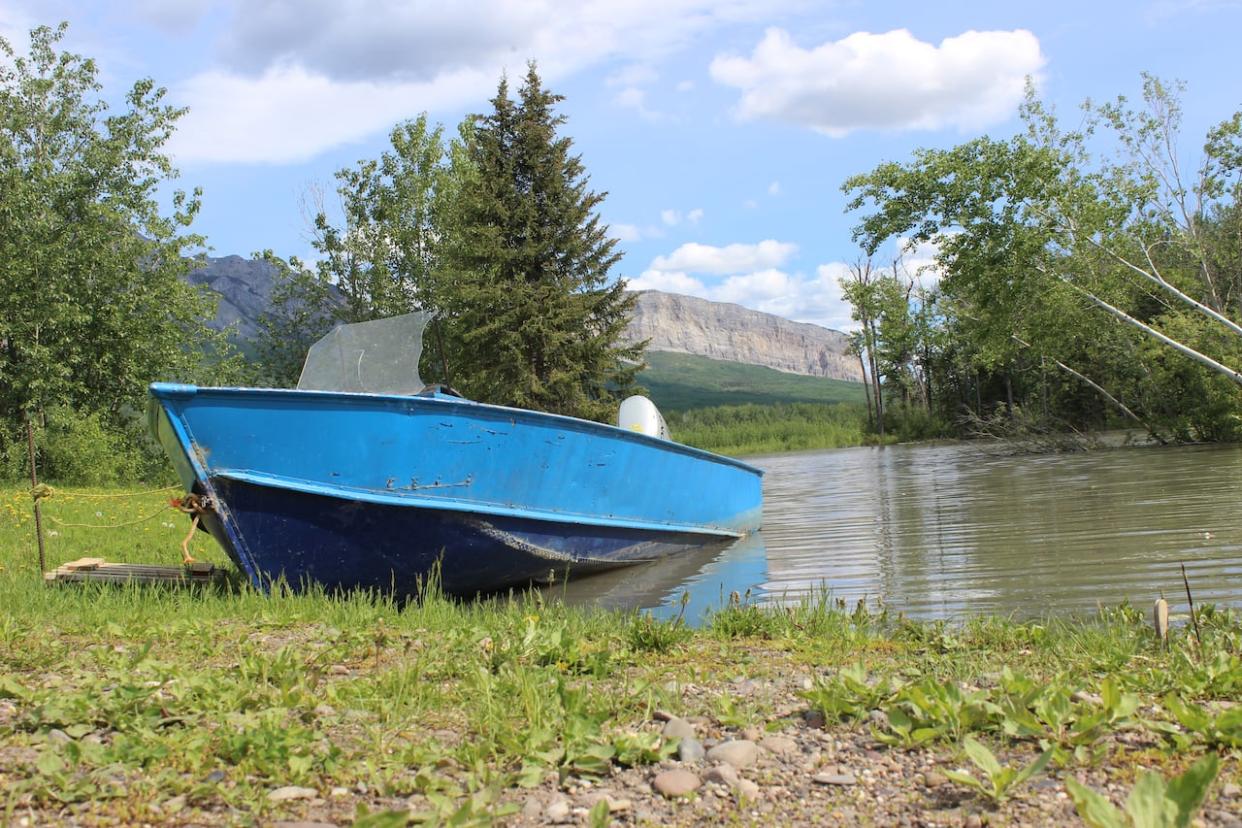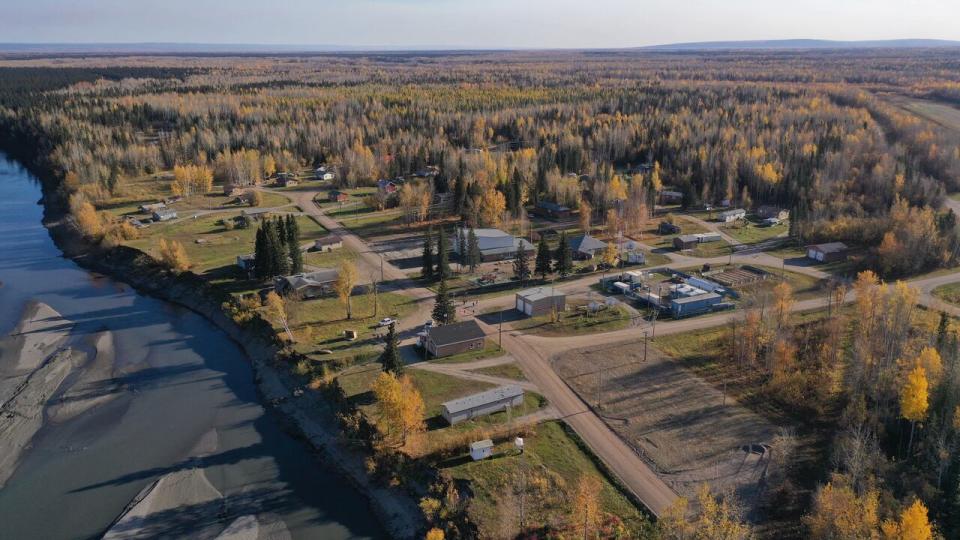Low rivers around Nahanni Butte, N.W.T., can handle forecasted rainfall says resident

A man who has lived in Nahanni Butte, N.W.T., all his life — and who has an intimate knowledge of the rivers that surround his home — isn't worried about the amount of rain forecasted to fall by Friday morning.
Environment and Climate Change Canada (ECCC) has issued a rainfall warning for the region, which includes Sambaa K'e and Fort Liard as well. Between 20 and 60 millimetres of rain is possible across the area starting Wednesday afternoon, it said. But a meteorologist with the federal agency says in the Nahanni Butte area specifically, up to 80 millimetres of rain is possible.
"That amount of rain over this short period of time, it's unusual," said Jesse Wagar, a warning and preparedness meteorologist with ECCC. A water monitoring bulletin from the N.W.T. government says it's more rain than the region normally sees in a month.
Depending on how quickly the rain falls, it could be even more significant. Wagar said the rain is expected to happen over the course of 36 hours, but "if that amount of rain happens to fall over 24 hours, that would correlate to about a one-in-50-year rainfall event."
John Murray Konisenta, who lives in Nahanni Butte, isn't worried at this point. He runs Nahanni River Expediting, a boat service that brings people who have finished paddling the South Nahanni River and their gear into town and starts them on their way back home.
He said he'll begin worrying if the rain lasts more than four days.
"If it's four or five days of rain, that's going to flood," he said.
Nahanni Butte lies at the base of the Mackenzie Mountains, and at the confluence of the Liard and South Nahanni Rivers. The territorial bulletin says the community is prone to flooding.

An aerial look at the community of Nahanni Butte, N.W.T., on Sept. 30, 2022. The South Nahanni River can be seen on the left, which flows into the Liard River further east. (Travis Burke/CBC)
But Konisenta said both those rivers are low right now. He believes they can handle the one metre rise in water levels that the N.W.T. government says is possible. And even if they can't — the community has dealt with flooding before, he said.
Nahanni Butte flooded almost entirely in 2012. It was also on the verge of flooding in 2022.
"We've been through those things before. We know all about … rain," he said.
The N.W.T. has been in a drought for two years now. While many across the territory might welcome a deluge of rain, Wagar said the dry ground does pose a challenge. It won't be able to efficiently absorb all the water, she said, and will "likely lead to significant runoff" and "rapid rises in water levels."
Environment and Climate Canada Canada said in its warning that flash flooding and washouts next to rivers, creeks and culverts are possible. The N.W.T. government, which issued its bulletin on Tuesday, said people planning to be out on the land should be prepared for rapidly rising and moving water.
It also urged people to be ready for emergencies by having a plan and kit ready to go.


